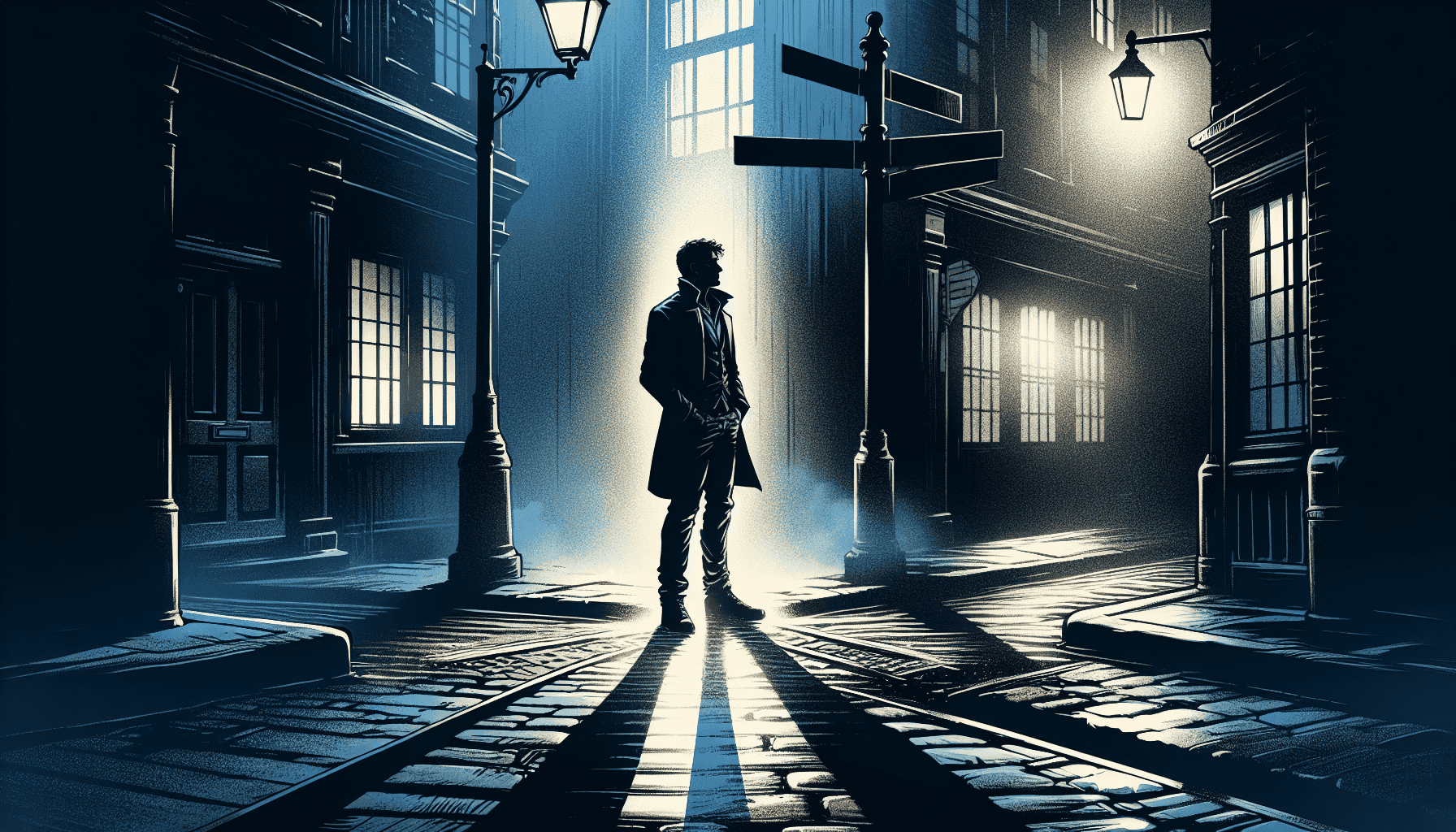Table of Contents
Creating an anti-hero can seem daunting, right? Characters who operate in the gray area between good and evil are fascinating, but they also require a delicate balance. You want to make sure they’re relatable and flawed, pulling readers in while keeping them guessing about their next move.
But don’t worry, if you stick with me, I promise you’ll find a clear roadmap to crafting an unforgettable anti-hero. By breaking down each essential step, you’ll be empowered to create a character that resonates with readers and keeps them on their toes.
Let’s dive into the art of character creation, from laying down their compelling backstory to challenging your readers with moral dilemmas. You’ll soon be on your way to penning a complex character that is as captivating as they are conflicted!
Key Takeaways
- Craft a rich backstory that explains the anti-hero’s behavior and motives.
- Define clear motivations that drive their actions and character arc.
- Create a multidimensional character with both strengths and weaknesses.
- Develop an inner struggle that adds depth and relatability.
- Maintain a consistent, though possibly unconventional, moral compass.
- Incorporate redeeming qualities to keep readers invested.
- Show character growth over time, revealing their evolution.
- Balance positive and negative traits to keep the character nuanced.
- Challenge the reader with complex moral dilemmas that provoke thought.
- Portray realistic consequences for the anti-hero’s decisions, enhancing accountability.

Step 1: Create a Compelling Backstory
Your anti-hero’s backstory should be rich and layered, giving readers a glimpse into why they behave the way they do. It’s important to include pivotal events that shaped their personality and moral compass. For instance, if your character grew up in a rough neighborhood, that can explain their pragmatic worldview. Remember that a well-crafted backstory not only adds depth but also makes the character relatable.
Try diving into their childhood, traumatic experiences, or pivotal moments of loss. Details like a rough upbringing or a betrayal can create sympathy, making readers root for them despite their flaws. You can even sprinkle in flashbacks throughout your narrative to keep the backstory fresh and engaging.
Step 2: Define Their Motivation
Every anti-hero needs a motivation that drives their actions; otherwise, they come off as flat and confused. Motivation can range from revenge, survival, or even a misguided sense of justice. Think about what your character desires most and how far they are willing to go to achieve it.
For example, Walter White from *Breaking Bad* dives into the drug world out of desperation to provide for his family. Understanding your anti-hero’s motivation can help shape their decisions and create tension. Tip: Include specific challenges that force them to confront their motivations, setting up a compelling character arc.
Step 3: Develop a Multidimensional Character
One-dimensional characters are boring, and your anti-hero shouldn’t be any different. They should possess a mix of strengths and weaknesses that make them feel realistic. Think of them as someone who might mess up but also fights for things they believe in.
Consider including traits that make them both likable and frustrating. For instance, an anti-hero might save a cat from a tree, but then turn around and rob a bank. This contradiction keeps readers engaged and guessing about their next move. Remember, complexity is key; readers love exploring shades of gray rather than black and white characters.

Step 4: Establish a Clear Inner Struggle
An inner struggle is what makes your anti-hero relatable and human. It’s that gnawing belief or fear that complicates their life and influences their choices.
Think of Batman, who battles his own fear of becoming the villain. This conflict drives him and adds layers to his character.
To create this inner struggle, ask yourself what beliefs your character holds that could sabotage their goals.
Write scenes that highlight these conflicts; perhaps they’re faced with a moral decision where their instinct contradicts their desires.
Ultimately, this inner turmoil can lead to significant character development and connect them more deeply with your audience.
Step 5: Maintain a Consistent Moral Compass
Even though your anti-hero may straddle the line between good and evil, they should still have a consistent moral compass.
This compass doesn’t have to align with conventional morality; it merely needs to guide their decisions.
Think of **Walter White** from *Breaking Bad*—his moral compass spins around his family but leads him into increasingly dark territory.
Establish clear rules your anti-hero follows, even if they’re unusual or skewed. This builds tension as the reader questions their decisions.
Let their choices spring from these internal laws, allowing for a mix of good intentions and flawed execution.
Step 6: Give Them Redeeming Qualities
For readers to root for an anti-hero, they need redeeming qualities that show their capacity for good.
Perhaps your character saves a life or unexpectedly shows compassion. These moments remind readers they’re not completely irredeemable.
Think of Katniss Everdeen from *The Hunger Games*; her bravery and selflessness in the face of oppression make her relatable.
Introduce scenarios where your anti-hero must confront their flaws and show some humanity, even if it’s fleeting. These glimpses can be the thread that draws readers in.
Step 7: Show Character Growth and Change
Character growth is essential in making your anti-hero feel real and compelling.
Start with flaws that significantly impact their journey. Over time, allow them to learn from their mistakes or confront their demons.
For example, it’s profound to sort through their motivations and realize where they went wrong. They may not attain full redemption but can still evolve.
Creating dynamic characters involves planting seeds of change early on and letting them blossom in the latter parts of your story.
Ultimately, witnessing this growth will deepen reader investment in your anti-hero’s arc.
Step 8: Balance Their Traits
Balancing traits is key to making your anti-hero nuanced and relatable.
They should have strengths and weaknesses that coexist, keeping readers engaged and guessing.
For example, a character might exude confidence in their actions but struggle with deep-seated insecurities.
Try creating lists of both positive and negative traits to track character balance, and sprinkle those traits throughout their actions.
Doing so will add richness to the character, preventing them from leaning too much toward villainy or heroism.
Step 9: Challenge the Reader with Moral Dilemmas
Imagine the thrill of watching your anti-hero tackle moral dilemmas that even the reader can’t resolve!
These challenges can reveal profound truths about the character and engage readers in deeper reflection.
Consider placing your anti-hero in situations where every choice has a significant consequence—this enhances tension.
Raise questions that resonate with the audience, forcing them to confront similar dilemmas in their own lives.
These moments often become memorable and pivotal, setting your character apart in a sea of cliché heroes.
Step 10: Ensure Realistic Consequences
Your anti-hero should face realistic consequences for their actions, which adds weight to their choices.
Consider how each decision affects their relationships, goals, and even their personal integrity.
When your character slips up or takes a dark turn, they should deal with the fallout—loss, remorse, or even harsher penalties.
This creates a sense of accountability and realism, keeping readers invested in the character’s journey.
Ultimately, grounding their experiences in a believable world enhances the narrative and makes the anti-hero relatable.
FAQs
To create a compelling backstory, consider your character’s origins, significant life events, and relationships. Ensure these elements shape their motivations and personality, providing depth that resonates with readers.
Defining a character’s motivation is crucial as it drives their actions and decisions. Clear motivations create relatable characters, facilitating emotional engagement with readers and enhancing the overall story arc.
To effectively show character growth, highlight transformative experiences and key decisions that illustrate change. Use internal monologue, dialogue, and reactions to situations to reflect their evolving perspectives over time.
Moral dilemmas challenge characters, revealing their values and beliefs. These situations promote growth by forcing them to make difficult choices, ultimately shaping their journey and allowing readers to connect with their struggles.



